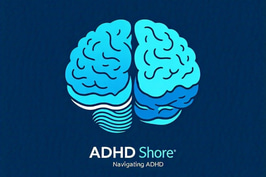ADHD in Children vs. Adults: Understanding the Differences and Similarities
1/11/20257 min read


Introduction to ADHD
Attention-Deficit/Hyperactivity Disorder (ADHD) is a neurodevelopmental condition characterized by persistent patterns of inattention, hyperactivity, and impulsivity that can significantly impact daily functioning. Recognized since the 20th century, ADHD affects a substantial portion of the population, with current estimates suggesting that it impacts approximately 5% of children and 2.5% of adults worldwide. The prevalence of ADHD indicates a need for comprehensive understanding and awareness, as the condition is often mischaracterized or underestimated.
Common misconceptions surrounding ADHD include beliefs that it is merely a childhood disorder that one outgrows or that it solely pertains to behavioral issues. In reality, ADHD can persist into adulthood, manifesting in a variety of ways that can affect work performance, relationships, and overall quality of life. Adults with ADHD may not exhibit the same typical symptoms as children, such as fidgeting or impulsive behavior. Instead, they may struggle with time management, organization, and maintaining focus on tasks, which can lead to challenges in personal and professional settings.
Another prevailing myth is the assumption that ADHD arises solely from poor parenting or lack of discipline. However, research indicates that ADHD has a genetic component, as well as being influenced by environmental factors. Neuroimaging studies further suggest that individuals with ADHD possess structural and functional differences in their brains compared to those without the disorder. Recognizing these elements is essential in addressing the needs of individuals with ADHD, irrespective of their age.
This overview serves to introduce the complexities of ADHD, paving the way for a more in-depth exploration of how this disorder manifests differently across various life stages, including its unique challenges and solutions for both children and adults.
Developmental Changes in ADHD Symptoms
The symptoms of Attention Deficit Hyperactivity Disorder (ADHD) undergo significant changes as individuals transition from childhood to adulthood. In children, ADHD often manifests prominently through hyperactivity and impulsivity. These behaviors are highly visible; for example, children frequently struggle to sit still, interrupt conversations, or exhibit restlessness in settings such as classrooms. Such hyperactive behaviors can lead to noticeable disruptions, prompting early assessments and interventions. Additionally, impulsive decisions made by children can pose risks, as they may act without considering consequences.
As children progress through developmental milestones, the nature of ADHD symptoms typically evolves. While hyperactivity may diminish in adolescence, symptoms of inattention and restlessness become more pronounced in adults. Adults with ADHD often report difficulties in maintaining focus, particularly in tasks that require sustained mental effort. The impulsivity observed in children may manifest in more subtle ways among adults, such as impulsive spending or hasty decision-making in professional settings. This shift underscores how ADHD can adapt and present differently across varying stages of life.
Moreover, the expectations and responsibilities that accompany adulthood can exacerbate existing symptoms. Adults may find it challenging to manage their time and prioritize tasks effectively, leading to feelings of overwhelm. Environmental factors, including work pressure and family commitments, often contribute to an increase in reported symptoms as adults navigate more complex social and occupational landscapes. Understanding these developmental changes is crucial for tailoring effective interventions that cater to the unique challenges faced by individuals with ADHD at different life stages. It is essential for parents, educators, and health professionals to recognize that while symptoms may evolve, the underlying condition requires continuous support and management.
Coping Mechanisms: Children vs. Adults
Individuals with Attention Deficit Hyperactivity Disorder (ADHD) experience symptoms that can significantly impact their daily functioning. Coping mechanisms are essential tools for both children and adults to manage ADHD effectively. However, the strategies employed often differ based on age and cognitive maturity. Children with ADHD often rely on behavioral therapy and parental guidance as primary coping strategies. Behavioral therapy focuses on reinforcing positive behaviors and modifying negative ones through structured environments. Parents play a crucial role in this process by creating routines and implementing rewards for appropriate behavior, thereby helping children develop self-regulation skills.
In contrast, adults with ADHD typically utilize more sophisticated coping mechanisms that reflect their life experiences and responsibilities. Medication remains a common choice for many adults, as it can help manage symptoms more efficiently, allowing them to maintain productivity in various aspects of life, including work and family. However, medication is often complemented by self-managed strategies such as mindfulness, organizational tools, and time-management techniques. These methods promote autonomy and cater to an adult's higher level of reasoning, as they can assess and adapt coping strategies to suit their personal needs.
Moreover, support systems play a pivotal role in the coping mechanisms employed by both groups. For children, family support and school interventions are essential for developing effective coping strategies. School counselors and teachers can implement individualized education plans (IEPs) that cater to a child's unique challenges. On the other hand, adults may seek support through peer groups or professional networks that offer understanding and shared experiences, fostering a sense of community. As individuals with ADHD transition from childhood to adulthood, their motivations for employing coping strategies evolve. While children may be intrinsically motivated to please parents and teachers, adults are often driven by their desire for personal growth and fulfilling professional responsibilities.
Common Challenges Faced by Children with ADHD
Children diagnosed with Attention-Deficit/Hyperactivity Disorder (ADHD) often experience a range of challenges that can significantly impact their daily lives. One of the most notable difficulties is in academic settings. These children may struggle with sustaining attention during lessons, following through with assignments, and organizing their workload. The inability to focus can lead to incomplete tasks and lower academic performance, making school a daunting environment for them. Furthermore, these issues may not only affect their grades but can also result in negative feedback from teachers and peers, which may further exacerbate their issues.
Social interactions present another critical area where children with ADHD encounter difficulties. They may find it challenging to read social cues, which can lead to misunderstandings and conflict with peers. Impulsivity, a hallmark symptom of ADHD, might cause them to interrupt conversations or act without considering the consequences. Such behaviors can lead to social isolation or exclusion from group activities, impacting their self-esteem and emotional development. While some adults with ADHD may navigate these social scenarios differently, children often require additional support to develop their social skills adequately.
Family dynamics can also be significantly influenced by the presence of ADHD in a child. Parents may find themselves in a continuous cycle of frustration as they strive to manage their child's behavior, leading to increased stress within the household. Siblings may feel neglected or overwhelmed by the attention their ADHD sibling receives, further complicating family relationships. Early detection and intervention are critical in addressing these challenges, as they can equip both children and their families with strategies to create a more supportive environment conducive to growth and development. Recognizing and addressing these common challenges is essential for improving outcomes for children with ADHD.
Adult ADHD and Its Unique Challenges
Attention Deficit Hyperactivity Disorder (ADHD) transcends childhood, persisting into adulthood for many individuals. The manifestation of symptoms may vary, but adults with ADHD often contend with unique challenges that can significantly impact their personal and professional lives. One of the most notable difficulties is time management. Adults with this condition frequently struggle to adhere to schedules, leading to missed deadlines and late arrivals. This can result in negative repercussions at work and home, exacerbating feelings of inadequacy and frustration.
Relationship difficulties also surface as a prominent challenge for adults coping with ADHD. Impulsivity—a common symptom—can lead to misunderstandings or conflicts in personal relationships. Partners may misconstrue impulsive comments or actions as insensitivity or lack of interest. Furthermore, an adult's struggle to maintain focus during conversations may create a perception of negligence, often straining relationships with loved ones and friends.
Career-related hurdles present additional obstacles. Many adults with ADHD find it challenging to sustain attention during lengthy meetings or manage multiple tasks concurrently. As a result, they may be perceived as less reliable than their peers, which can hinder career advancement and contribute to job dissatisfaction. The fear of failure and the constant need to prove themselves can create a cycle of anxiety that intensifies the ADHD symptoms, making it increasingly challenging to navigate the workplace environment.
Untreated ADHD in adulthood can lead to a variety of negative outcomes, including diminished self-esteem, depression, and heightened stress levels. This emphasizes the critical importance of seeking appropriate support and treatment. Adult ADHD may manifest in ways that are less visible than in children, but its impact is equally significant, making recognition and understanding of these unique challenges essential for fostering healthier and more productive lives.
Similarities in ADHD Across Ages
Attention Deficit Hyperactivity Disorder (ADHD) manifests in both children and adults, characterized by core symptoms that remain consistent throughout the life span. These symptoms can primarily be categorized into three domains: inattention, hyperactivity, and impulsivity. Regardless of age, individuals with ADHD often struggle with sustaining attention, managing time, and following through on tasks. For instance, children may have difficulty completing homework assignments or following classroom instructions, while adults might find it challenging to meet work deadlines or maintain focus during meetings.
Hyperactivity, characterized by excessive movement and fidgeting, is another prevalent trait seen in both age groups. Children exhibit this behavior through persistent restlessness and difficulty remaining seated, whereas adults may experience a more subdued version, leading to a constant sense of inner restlessness and the need to stay busy. Impulsivity, marked by hasty actions without forethought, is also common among both children and adults. Adults may engage in impulsive decision-making in professional settings or personal relationships, reflecting a thread of consistency in the presentation of the disorder.
Furthermore, familial patterns in ADHD indicate a strong genetic link. Numerous studies suggest that individuals with a family history of ADHD are at a heightened risk of developing the disorder. This hereditary component establishes a bridge connecting ADHD's manifestations in children and adults, suggesting that both populations may benefit from similar insights regarding its etiology.
Treatment strategies aimed at managing ADHD, such as behavioral therapy and medication, demonstrate efficacy across age groups. Approaches focusing on skill development, organization, and self-regulation have proven effective for both children in educational settings and adults in professional environments. Thus, understanding the similarities in ADHD across different ages provides essential insights into effective management and support strategies for affected individuals.
Conclusion: Understanding ADHD Across the Lifespan
Attention Deficit Hyperactivity Disorder (ADHD) manifests differently across various life stages, emphasizing the necessity of recognizing these differences in both diagnosis and treatment. In children, symptoms typically include hyperactivity, impulsiveness, and difficulties with attention. These traits may become more pronounced in structured environments, such as classrooms, leading to challenges in academic settings. Conversely, as individuals transition into adulthood, these symptoms may evolve into more subtle expressions, such as restlessness or chronic disorganization, which can significantly impact daily functioning and career prospects.
The symptoms of ADHD in children often diminish over time; however, many adults continue to experience residual challenges that affect their quality of life. For instance, adults might overlook impulsive behaviors but may still struggle with time management or maintaining focus during tasks. Therefore, understanding ADHD on a continuum allows caregivers, educators, and healthcare professionals to tailor their approaches effectively through the lifespan.
Recognizing both the similarities and differences in ADHD presentations at various ages is vital to providing appropriate support and interventions. A lifespan approach to ADHD emphasizes ongoing assessment and adaptation of strategies that align with individual needs as they change over time. This perspective reinforces the idea that ADHD is not merely a childhood disorder but a condition that can persist into adulthood, necessitating sustained management strategies.
In conclusion, awareness of how ADHD uniquely impacts children and adults is essential in fostering effective support systems and treatments. By engaging with the evolutionary nature of ADHD, stakeholders can better accommodate individuals across their lifespan, ensuring they receive the necessary resources to thrive, irrespective of age.
